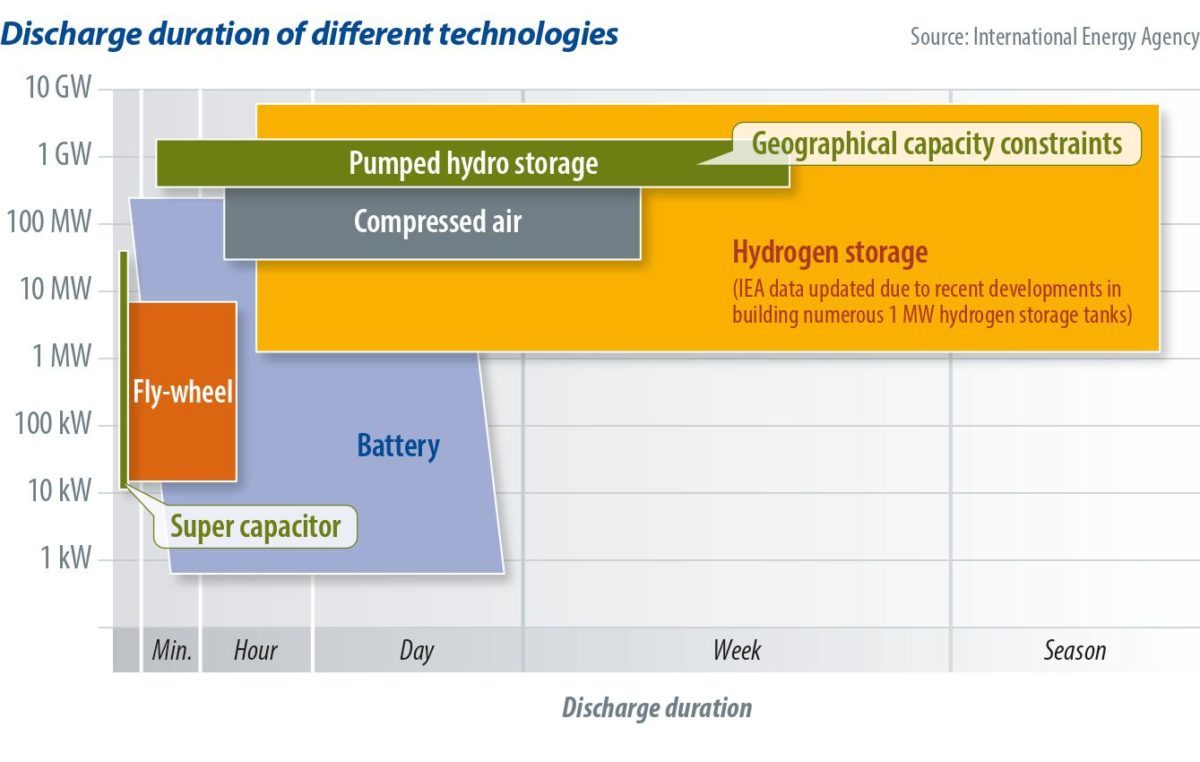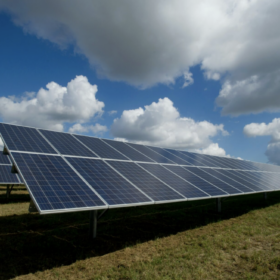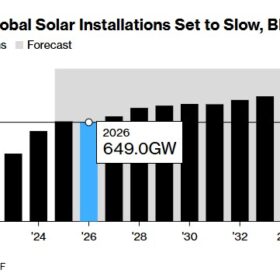From the June edition of pv magazine global
Much of the discourse surrounding green hydrogen focuses on the production and applications of the fuel – like electrolysis and fuel cells. However, challenges around the storage and distribution of hydrogen need to be addressed to realize the hydrogen economy of tomorrow. Without the requisite infrastructure, it is difficult to envisage hydrogen scaling up to the levels needed for deep decarbonization, as infrastructure ties together production and application, as seen in the diagram below.
Storage medium
Hydrogen derives its value from versatility. As the world shifts to renewable electricity, there are curtailment issues because storage technologies are still limited. Lithium-ion batteries have been a boon for the industry but still have limitations regarding duration. Instead of storing that electricity directly in a battery, the electricity can be fed into an electrolyzer to produce hydrogen. Hydrogen can be stored for long durations, giving it an advantage over other storage solutions, as shown in the graphic on the next page.
Storage options
One of the major challenges surrounding hydrogen storage is its density. Despite its high gravimetric density (kWh/kg), hydrogen has a low volumetric density (kWh/liter), which makes storage of large quantities difficult. This is why hydrogen tends to need to be transformed through processes such as compression or liquefaction, each of which carries its own set of challenges.
Hydrogen is most commonly stored in tanks, either in a gaseous or liquid state. The tank types typically vary depending on the application. Fuel-cell electric vehicles have smaller, higher-pressure tanks due to space constraints, whereas a less space-constrained location can afford lower pressures and larger tanks.
However, other options are beginning to emerge. For example, the geological storage of the gas in salt caverns or depleted oil fields can provide much-needed high-volume storage capacity. There are currently less than 10 of these facilities throughout the world, but examples like the Advanced Clean Energy Storage (ACES) project in Utah are now under development. Other storage mediums include liquid organic hydrogen carriers, ammonia, methanol, and various other chemical forms.
Distributed hydrogen
Due to the logistics, it is common for hydrogen to be produced and used onsite by any given industry. However, when this is not the case it may be necessary to transport the fuel thousands of miles, which is a costly endeavor. Pipelines move most of the world’s hydrogen, but other methods include trucking, rail, and barge transport. As hydrogen scales up to be an international commodity, carrier ships are also being introduced as an essential medium.
Hydrogen-dedicated pipelines are the cheapest, most effective solution for the storage and transport of large quantities of hydrogen. However, there are only 1,600 miles of hydrogen pipelines currently installed in the United States, for example. Most of these pipelines are located in the Gulf Coast region in the southern United States. While 1,600 miles currently represents the largest hydrogen network in the world, the United States will need to expand this network to effectively scale up the hydrogen economy. Rather than building new pipelines, which is no small task, injecting hydrogen into the natural gas grid has been proposed by many parties as an alternative solution. The United States is home to more than 300,000 miles of natural gas transmission pipelines (including offshore) and 2.1 million miles of distribution pipelines.
Using the natural gas grid comes with several challenges, however. In some instances, the pipelines would need to be retrofitted to transport high blends of hydrogen. Issues surrounding retrofits include assessing and upgrading the permeability of pipelines, as hydrogen is more prone to leakage, and the need for compression. End-use compatibility is also a focus. Certain in-home appliances such as boilers and stoves can only tolerate a hydrogen component before modifications become necessary. Safety is also a concern, because hydrogen has a considerably wider range of conditions in which it can ignite.
Building forward
Hydrogen’s value chain has no shortage of complexities, and the value chain gets more complicated with the shift toward green hydrogen. Although local and regional hydrogen markets are already established, the hydrogen economy will require significant investments in new and existing infrastructure if hydrogen is to advance in other markets like transportation, power generation, and heating. Leveraging hydrogen’s current momentum to make these required infrastructure investments can help to accelerate the ongoing global energy transition.
The views and opinions expressed in this article are the author’s own, and do not necessarily reflect those held by pv magazine.
This content is protected by copyright and may not be reused. If you want to cooperate with us and would like to reuse some of our content, please contact: editors@pv-magazine.com.







To decarbonize, the hydrogen the world’s consumes must be made renewably or replaced by renewables. But it doesn’t follow that a “hydrogen economy” is going to, or should, happen. Hydrogen production overwhelmingly comes from fossil fuels, primarily natural gas and it’s unlikely to be 50% green by 2040, so any novel uses of hydrogen will only serve to prolong natural gas production. Likewise transporting hydrogen through the existing natural gas pipeline system is pointless for deep decarbonization, since natural gas must remain the majority of gas transported until the system is rebuilt.
“Hydrogen derives its value from versatility.” But green hydrogen depends on renewable electricity, which is far more versatile. Yet green hydrogen costs much more. Gas hookups in buildings and “gas” stations are going to go away faster than green Hydrogen production ramps up.
Skierpage’s remarks are correct regarding the present situation: in particular, hydrogen refueling in e.g. California (where I live) costs on the order of US$14/kg, and is generally made from natural gas. However, numerous studies from DOE/NREL have shown that the only impediment to replacing these sources with hydrolysis is investment: in high volume, the expected cost of hydrogen from water is dominated by the cost of electricity, and can be below US$2.50/kg if electricity is US$0.03/kWH (see, for example, Analysis of Advanced H2 Production and Delivery Pathways, B. James, D. De Santis, J. Huya-Kouadio, C. Houchins, G. Saur, DOE Office of Fuel Cell Technology H2IQ March 25, 2020). Naturally, for this to work, you also need a market, so the real challenge is to get both coupled elements (producers and users, e.g. refueling stations and truck or automobile purchasers) to invest together.
It would have been good to provide a few numbers to clarify why the discussion is important, so I’ll help:
1: the energy density of hydrogen (from the reaction H2 + 1/2 O2 => H2O) is about 120 MJ/kg (million Joules per kilogram) or 140 MJ/kg depending on whether you make water vapor or liquid water. For comparison, the energy density of a lithium battery pack is at best about 1 MJ/kg. However, as pointed out in the article, the VOLUME density is MUCH lower. Uncompressed hydrogen gas weighs 2 grams per mole, so it takes 500 moles to make a kilogram, and each mole occupies about 24 liters at room temperature and 1 atmosphere. So uncompressed hydrogen density is 143/(500*24) = 0.01 MJ/kg. This is why you have to do something to store it (unless you have a HUGE salt cavern lying around).
2: to get to any useful volume density you have to compress the hydrogen to hundreds of atmospheres of pressure (thousands of PSI if you prefer those units). But the tank that does that weighs a lot. For example, the Toyota Mirai uses a 700 atmosphere hydrogen tank that weighs about 88 kg to store 5 kg of hydrogen (that’s about 5.7 weight percent), so the resulting actual density is around 6.5 MJ/kg, still better than a battery but a lot less than the starting material. The volume density is a respectable 5 MJ/liter, better than a battery but much worse than gasoline.
3: You can also liquefy the hydrogen to achieve better mass and volume density (around 50-70 MJ/kg or roughly 8 MJ/liter, including the storage hardware, for transport or aviation). But this requires a very complex infrastructure and sacrifice in the duration of storage shown in the graph, since the hydrogen slowly boils away unless you also include a refrigerator. And if you’re flying at high altitude you might also need to carry the oxygen, or include a compressor, in each case adding equivalent weight and volume.
The above shows why it is indeed easiest to move the gas in a pipeline if you have one lying around, per Mr. Willette’s remarks.